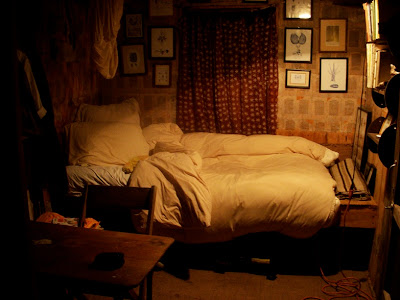Before I start sifting through the stories from the Physical Center Collection, I should pay homage to the event that started this project. In the summer of 2009, I was asked to be a guest chef for the Mildred’s Lane Social Saturday Lecture Series. Mildred’s Lane is a bucolic space that is a perfect retreat from the rest of the world. It is part residency, part educational workshop, part on-going art event, part think tank and part experiment in collective/alternative methods of living. The Social Saturday Lecture series is a way to interact with both the local community and connect with the larger art community through discourse and food.

Social Saturday Dinners are major events involving hours of aesthetic preparation of the meal. From the table setting to the food presentation to the dishwashing stations.
Even the refrigerator gets a makeover.

The whole meal is an aesthetic experience.
I was also a resident artist at Mildred’s Lane for the last project session and was looking for a way to combine my interest in memory culture* with the food projects I had been conducting for the two years prior. As a result, I decided to conduct a series of interviews with the current fellows and residents about their relationship to food and their memories associated with food. Interviews were primarily conducted in my living space, the Grafter’s Shack.
What was once a project installation is now a small sleeping accommodation. The space is quiet and removed, an excellent place to have an intimate interview and travel back in time. The interview was conducted much in the same way that it is now. A small amount of personal information was collected [like name, sex, age, occupation] and I asked a few questions about their relationship to food. [During this time, I want people to feel comfortable and believe that the type of memories people have and the experience people have reliving them can be dictated by a positive, negative or neutral relationship to food. To this end I have added tea and cookies to the interview process. This seems to give participants a sense of comfort, even if their relationship to food isn’t the most positive.] Time was left at the end for talking about their food memories.





No comments:
Post a Comment